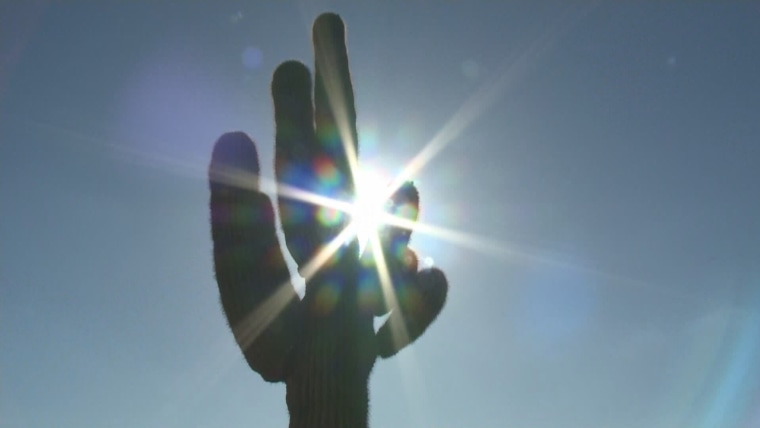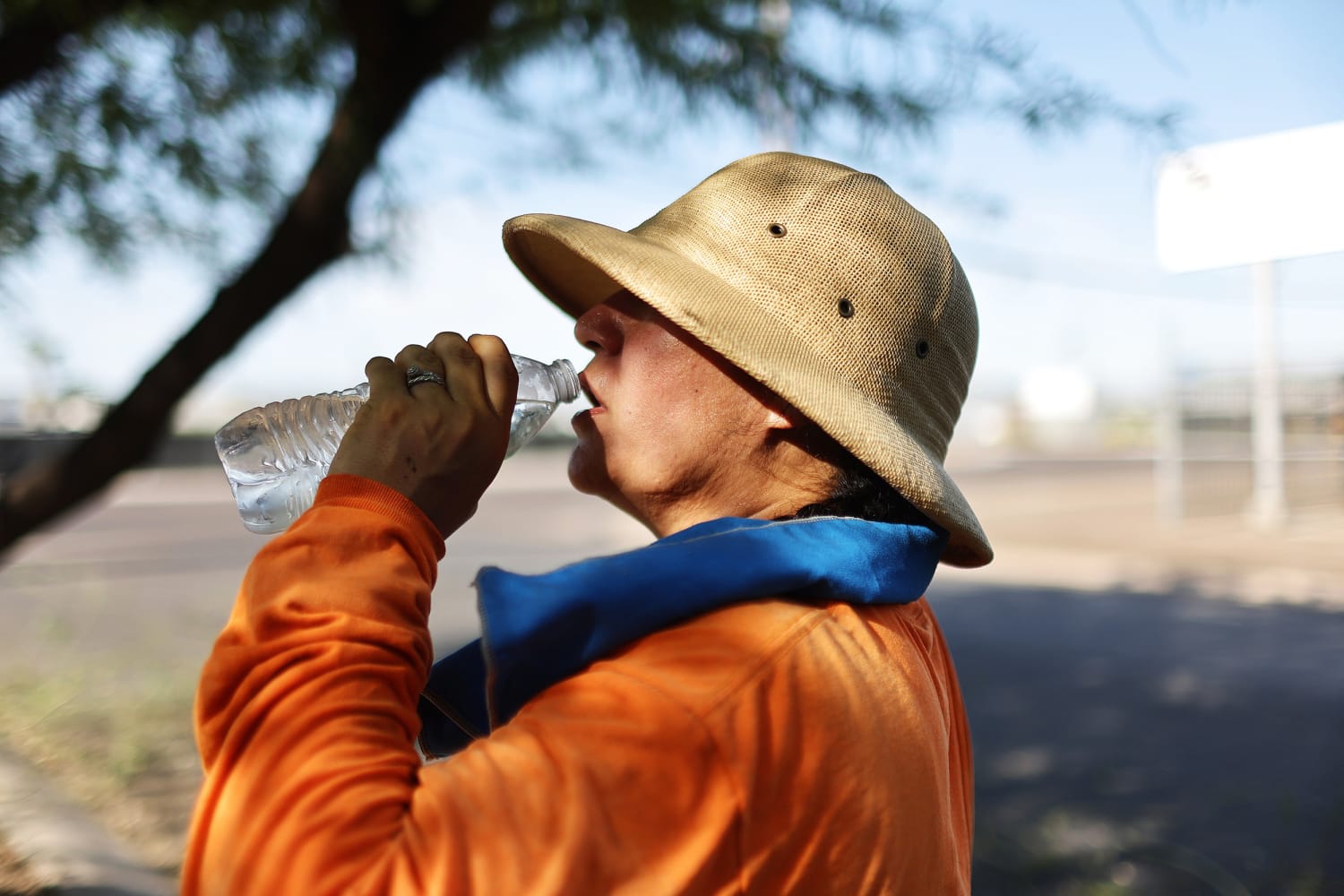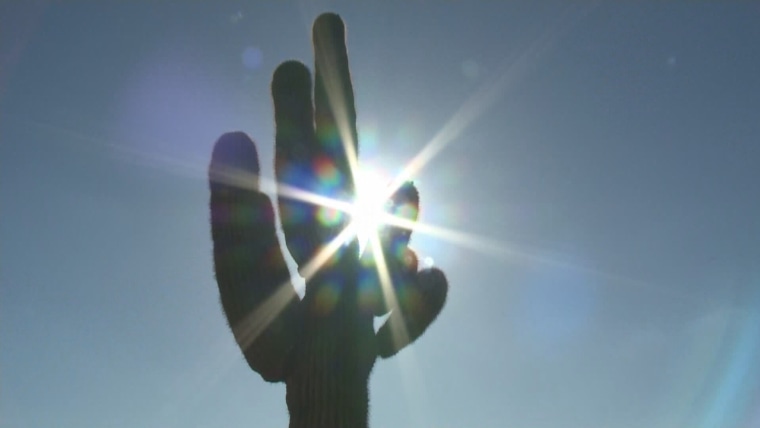Congressional Democrats are taking new steps to boost protections for workers toiling in record-high temperatures.
A bill introduced in the House and Senate late Wednesday would direct the Occupational Safety and Health Administration to adopt an interim heat standard for workplace safety. The measure, which coincides with heat alerts covering more than 100 million people nationwide, reflects heightened urgency in Washington to address the health risks of extreme heat.
“Workers in this country still have no legal protection against excessive heat — one of the oldest, most serious and most common workplace hazards,” said Rep. Bobby Scott, D-Va. “This legislation will require OSHA to issue a heat standard on a much faster track than the normal OSHA regulatory process.”
Scott was among the more than 50 Democratic and independent lawmakers who introduced a version of the bill in both chambers, following previous efforts led by Rep. Judy Chu, D-Calif., to require OSHA to expedite a federal heat safety standard.
The effort comes as President Joe Biden separately rolled out new actions Thursday aimed at cracking down on heat-safety violations in high-risk workplaces, along with heightened investments in weather forecasting and water storage as climate change fuels increasingly extreme summer temperatures.
OSHA didn’t comment directly on the proposed legislation, but a spokesperson said heat illness prevention is a “top priority,” adding that the agency is “working diligently” toward developing a standard — a rule establishing specific protections employers must provide against a workplace hazard — on heat illness. OSHA has also taken steps in the meantime to protect workers in hot environments, including enhanced enforcement.
“Every worker — regardless of their job or the region they work in — is entitled to a safe and healthy workplace,” OSHA Assistant Secretary Doug Parker said in a statement, “and we will continue to use all the tools in our toolbox to ensure all workers have the health and safety protections they need and deserve in all workplaces.”
OSHA began developing a heat standard in 2021 through its notoriously slow process, and regulatory experts say it is still more than two years away from a final rule taking effect. The bill introduced this week would require an interim standard, applying to both indoor and outdoor worksites, to be finalized within a year of passage.
“Republicans recognize the importance of keeping workers safe in the workplace,” Rep. Virginia Foxx, R-Va., who chairs the House Committee on Education and the Workforce, said in a statement. But she criticized the effort as “kowtowing to Big Labor and progressive activists,” adding that “more onerous and ineffective regulations will push our economy backwards.”
Earlier this week, 112 Democratic and independent members of Congress, led by Reps. Chu and Greg Casar, D-Texas, and Sen. Bernie Sanders, I-Vt., sent a letter to the heads of OSHA and its parent agency, the Department of Labor, calling for “the fastest possible implementation” of a workplace heat safety standard.
On Tuesday, Casar went on a “thirst strike,” spending nearly 9 hours outside without water breaks to protest a new Republican-led Texas law that eliminates local protections against extreme heat, according to The Associated Press. That state measure, which goes into effect in September, overturns ordinances in Austin and Dallas requiring water breaks for construction workers.
“The Biden Administration must step in, override [Gov. Greg] Abbott, and ensure heat protections for all Americans in all industries,” Casar said in a statement.
Currently only a handful of states have any workplace heat protection rules, and most of those cover only outdoor roles like farm laborers and construction workers.
OSHA has been increasing its heat-related inspections in recent years, particularly on very hot days, as part of a national heat emphasis program, conducting more than 1,900 such inspections since April 2022.
But the agency “has very little ability to require employers to protect their workers from extreme heat,” said David Michaels, a public health professor at George Washington University who served as OSHA director in the Obama administration. “The current situation is untenable.”
Advocates first petitioned the agency to create a heat standard more than a decade ago, in 2011. Michaels, who led OSHA at the time, denied it “because agency resources were stretched thin by multiple other rulemakings,” he later wrote in a 2018 Washington Post opinion article that called on the agency to write “long-overdue” heat stress protections.
With July already on track to becoming the hottest month ever recorded globally — on the heels of the hottest June ever — doctors are increasingly warning of the risks of heatstroke and related illnesses.
Young and active people, not just the elderly or those with pre-existing conditions, have been arriving in ER rooms sick from intense heat. Heatstrokes can cause severe symptoms, including changes in mental status, coma and seizures. A milder form of heat-related illness, known as heat exhaustion, can cause headache, nausea or dizziness. Physical exertion under such conditions, especially for prolonged periods, can be deadly.
Advocates hope the bill for an interim standard can be passed in time to take effect by next summer.
“It should not be an extreme ask for employers with workers in hot locations to provide consistent access to cool drinking water and work breaks away from the deadly heat,” said Juley Fulcher, a worker health and safety advocate with Public Citizen, a consumer advocacy nonprofit that petitioned OSHA to create a heat standard more than a decade ago. “Workers’ lives are at stake.”
Source: | This article originally belongs to Nbcnews.com











